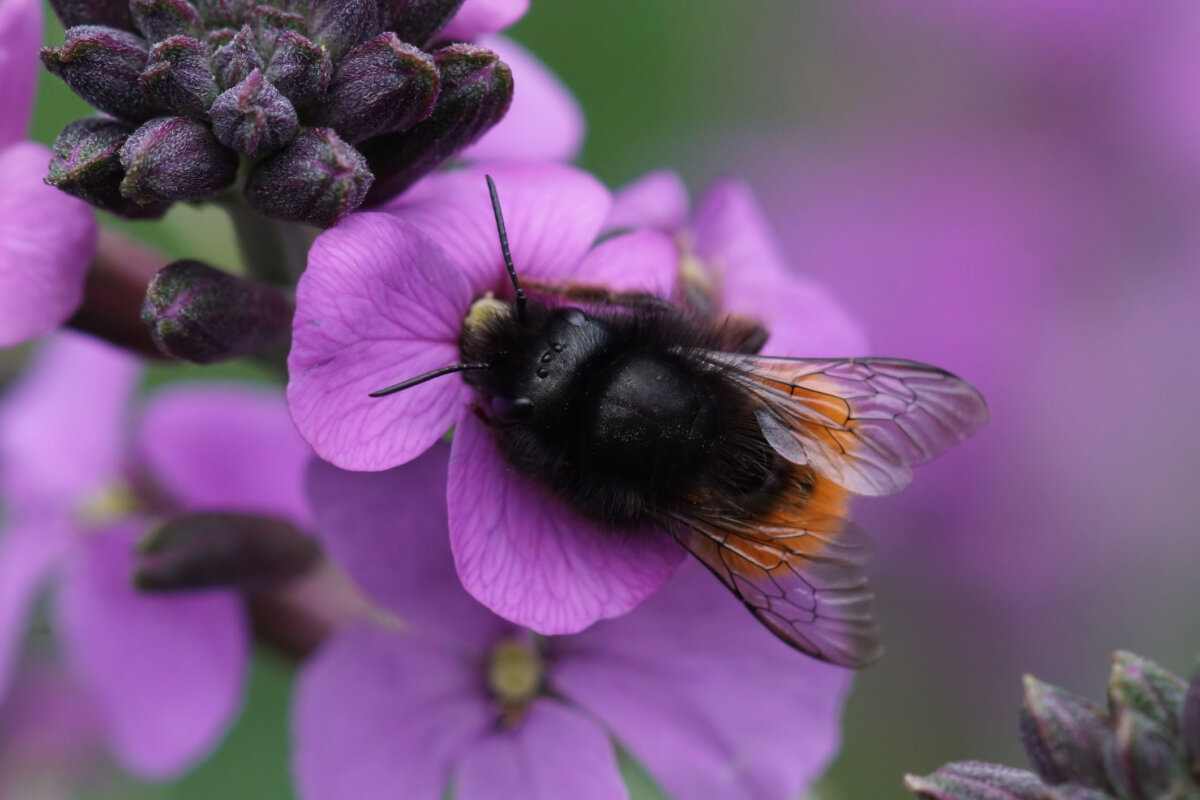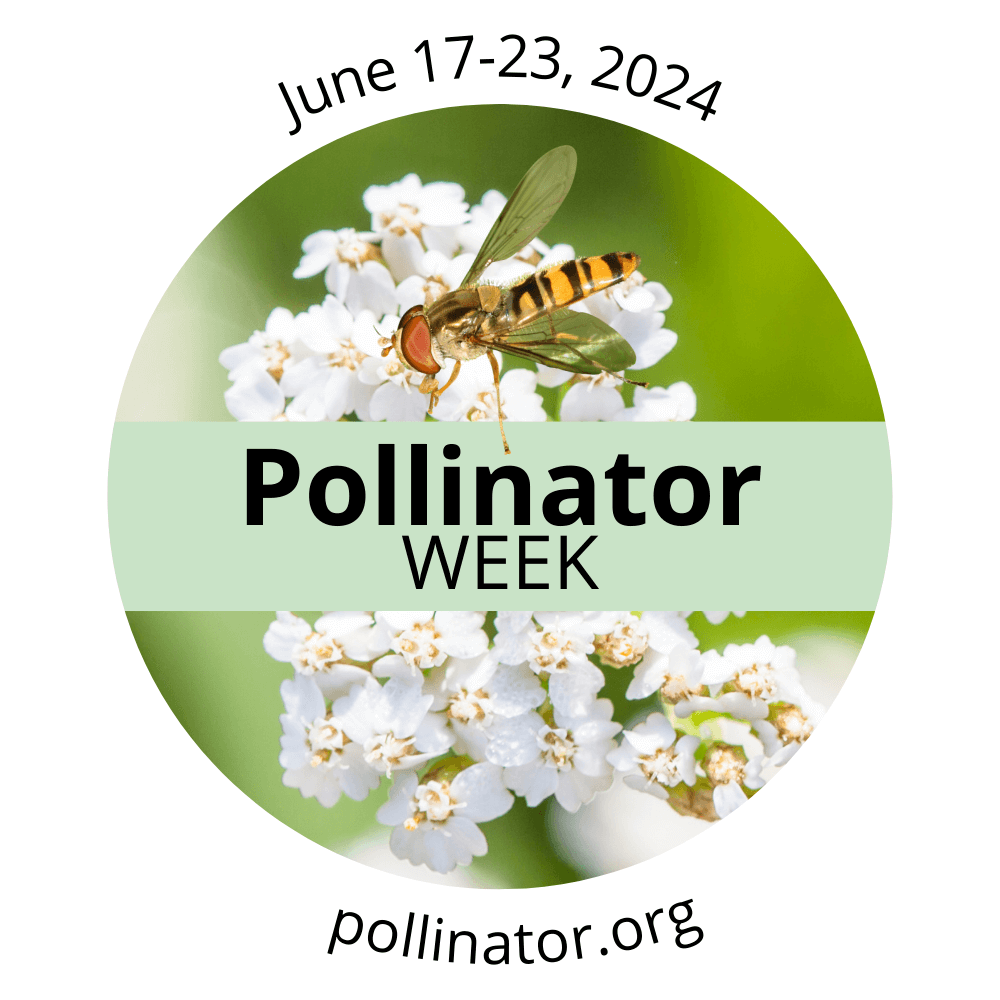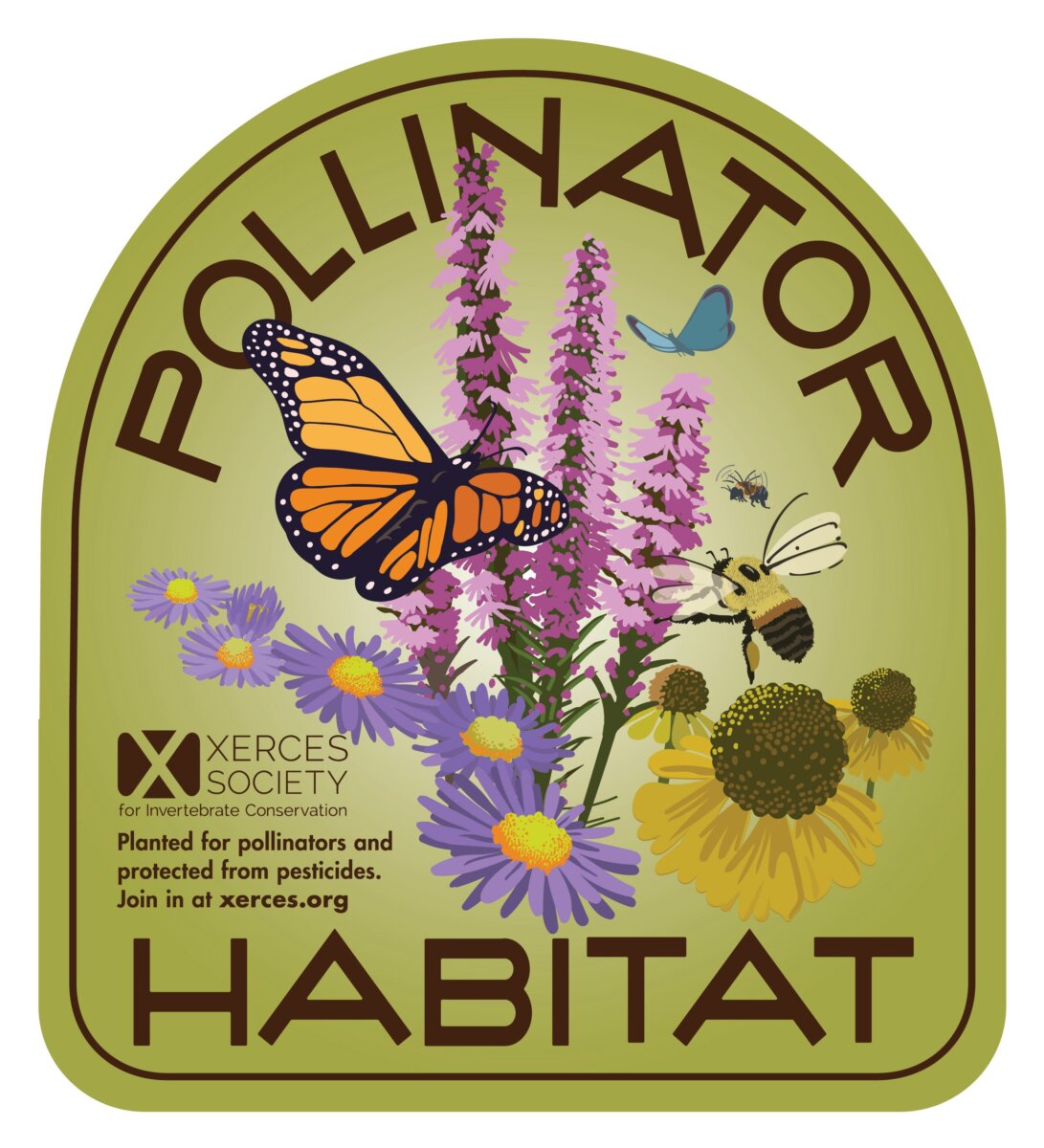
You can help bees and other pollinators by providing food, water and shelter.
Celebrate Pollinator Week, June 17-23. Pollinator Week is an annual celebration in support of pollinator health. Pollinators “are the unsung heroes behind the food we enjoy and the beauty that surrounds us,” said the Pollinator Partnership. Pollinators include bees, butterflies, moths, flies, beetles, bats and birds, especially hummingbirds. The goal of Pollinator Week is to raise awareness about these important critters and what we can do to protect them.
You can help pollinators in three ways: provide food, provide shelter and provide water. The Xerces Society suggests taking the Pollinator Protection Pledge. In addition to providing food and shelter, the pledge includes avoiding the use of pesticides, especially insecticides, and talking to your neighbors about the importance of pollinators and their habitat.
 Food for pollinators
Food for pollinators
Choose a variety of plants that bloom at different times, so you can provide nectar and pollen throughout the growing season. Native plants are especially important. Here are plants that attract pollinators and grow well in our region.
- Xerces Society: Pollinator Plants for the Maritime Northwest
- Pollinator Partnership: Pacific Lowland Regional Guide
- Oregon Metro: Native Plants for Pacific Northwest Gardens
- OSU Extension: 12 plants to entice pollinators to your garden
- Dunn DIY: Plants that Attract Pollinators in the Pacific Northwest
- Proven Winners: Shrubs for Pollinators
- Great Plant Picks: Plants for Bees
- Great Plant Picks: Plants for Birds
- Great Plant Picks: Plants for Butterflies
- Great Plant Picks: Plants for Hummingbirds
 Shelter for pollinators
Shelter for pollinators
Pollinators need good habitat to survive and thrive. You can add pollinator habitat through several methods.
- Rethink your mulch and leave some bare ground. Seventy percent of bees nest in tunnels and require access to bare soil, said the Xerces Society. “Removing mat-forming vegetation, duff, and forest residue in relatively well-drained, sun-exposed areas can provide nesting habitat for these species,” according to Forest Stewardship Notes.
- Grow plants with hollow stems, such as raspberries, elderberry, hydrangea and others. Thirty percent of native bees lay their eggs in cavities, such as hollow stems or holes in dead wood.
- Leave a dead tree, stump, log or branches. Dead woody material provides habitat for all sorts of wildlife.
- Leave a brush pile instead of having all your clippings and pruned branches hauled away. Bumblebees may nest in cavities above and below ground, including brush piles, abandoned rodent burrows and bird nests, grassy tussocks or even artificial birdhouses.
- Plant bunch-forming native grasses to create cover for bee nests and habitat for a range of species.
- Add bee houses such as bundles of bamboo, reeds or other hollow or pithy stems that are closed at one end.
- Plant host plants for butterflies. Butterflies require species-specific host plants to rear caterpillars. Check out this guide from the Oregon Department of Forestry and links to butterfly gardening resources from the Washington Butterfly Association.
You can find lots of useful details in the Xerces Society post, “5 Ways To Increase Nesting Habitat For Native Bees.”
Water for pollinators
When temperatures are high, water evaporates quickly from leaves and flowers. Pollinators use water sources to drink, cool nests or get minerals. During this time, pollinators such as bees and butterflies will often use water dishes or shallow bird baths.
According to UC Davis Bee Haven, once bees find a water supply, they will return regularly. “Water is so important that foragers will do the waggle dance to direct hive mates to water sources just as they will for flowers.”
The Washington Department of Fish and Wildlife suggests making an insect watering dish. In a shallow dish, place a variety of stones of various sizes or corks. Fill the dish with an inch of water. “Bees can’t swim! They must be able to stand where it’s dry and drink,” said UC Davis Bee Haven. The stones allow insects and small birds to land and drink safely.
Drain completely and replace water every two to three days to keep it clean and avoid mosquitoes. If your water source is a pond, you may use Bacillus thuringiensis israelensis for mosquito control as it’s harmless to bees.
Providing one of these water sources will benefit pollinators:
- Birdbath or shallow water source with stones to keep insects from drowning
- Butterfly puddling area
- Water garden or pond
- Local spring
- Natural body of water, such as a lake or river
UC Davis Bee Haven has more details on providing water sources for bees. One method they use is to create “pots” using coiled soaker hoses connected to an irrigation timer. These “are a great way to efficiently deliver water in bee-sized droplets.” You can find construction details here.
Our services can help too
Contact In Harmony for help in creating a landscape that is pollinator-friendly. We can design and install a landscape that attracts birds, bees and butterflies. Our natural lawn, tree and shrub care services help your plants thrive and reduce or eliminate the need for pesticide use.

Never too late to celebrate pollinators.
Yes, we agree!